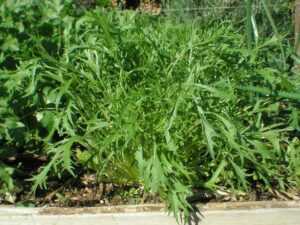 Next week, Purim is scheduled to joyfully arrive. In order for us to prepare for harvest day, the order system will close down for any instructions/orders for Monday (Shushan Purim) earlier than usual– by Thursday, 9:00 PM. This will enable us to prepare on Friday. Please, please do not send in late requests. On Sunday we will be unavailable by email or phone. Please let us know of any orders or changes in your boxes ahead of time—and have a wonderful Purim celebration!
Next week, Purim is scheduled to joyfully arrive. In order for us to prepare for harvest day, the order system will close down for any instructions/orders for Monday (Shushan Purim) earlier than usual– by Thursday, 9:00 PM. This will enable us to prepare on Friday. Please, please do not send in late requests. On Sunday we will be unavailable by email or phone. Please let us know of any orders or changes in your boxes ahead of time—and have a wonderful Purim celebration!
______________________________
 In honor of Purim, Melissa from Mipri Yadeha is preparing a special, creative line of yummy products for Mishlochei Manot:
In honor of Purim, Melissa from Mipri Yadeha is preparing a special, creative line of yummy products for Mishlochei Manot:
The Scroll of Esther–distinctive, hand-fashioned leather scrolls in a royal package: fruit leather in select flavors: peach, clementine, apple-ginger, persimmon-carrot, guava, pomegranate, apple-date, orange-apple and more. 10 NIS per scroll.
_______________________________
And…Pesach is lurking in the bushes, ready to pounce. For the third year in a row, Asaf and Arik from “Minhat Ha’aretz” offer their handmade Matzot shmurot made from Israeli organic wheat. This year they are selling crispy or soft matzot, as well as handmade matzot from spelt flower (non-organic). Click this info page for further details (in Hebrew).
Prices: 125 NIS per kg organic wheat shmura matza, 140 NIS per kg spelt matza. For orders: email or text us by March 27th. The matzot will arrive at your home the week before the holiday (April 7 or 9)
Chag Sameach!
_________________________________
A New Leaf…
As Purim prepares to make its entry, our own little winter disguised as spring has undergone a facelift and dressed up as winter. A little itty bitty winter. The week started out with cool, rainy weather, with the forecast calling for an overcast, rainy week. We’re hoping for a v’nahafochu, where our field will be liberated and saved, and we shall rejoice in the rain, mud and fog.
Over the past two weeks, we began harvesting new greens that we’ve been doting on in our net house. These greens are not so well known, not even to veteran clients, because it’s been awhile since we’ve grown them. So here’s some info about the mizuna (or Japanese mustard green) and the bok choy. In Israel they are marketed as “baby greens” (a mesclun mix) because they are young and tender. Besides being low-calorie and high in nutrition, they are truly delicious, great in salads, as a nosh, in your sandwich and even stir-fried (very lightly, though.)
Here they are:
So if they’re so great, why haven’t we grown them in ages? Well… growing these specialty greens requires much precision: they grow very fast, and we have to grow them clean, as greens are not supposed to be washed till just before you use them. On the other hand, we cannot wrap up and send you muddy baby greens, especially since they’re so small, and it doesn’t make sense to perform a general cleaning. In the past we have attempted to grow such greens as mizuna, cress and others, but only the tot soy and mustard greens survived, and we started growing even them as full-sized greens, not the “mini” varieties. Apparently, the open field is not the place for young greens…
But this winter was different. We now have a net house, whose raison d’etre is to open up growing possibilities which did not exist in the past: growing summer tomatoes over a longer season and with greater success (open field tomatoes are quickly damaged by diseases and viruses, and their season is very short), and growing cucumbers and zucchini in the summertime, protected from the nasty fly and other insect-transmitted viruses. Over time, we have discovered that other crops enjoy the comfort provided by the net house, which boasts warm weather in wintertime (just a little warmer, as it is a net house, not a hothouse. Still- it’s significant) and some shade in the summer. It protects against insects that nibble on the young plants (the kohlrabi, for example) before they even grow, and protects against flying insects that penetrate the leaves (like in beets and arugula). It now seems that the net house can be more efficient that we ever imagined.
But, of course, the space is very limited and unlike the open fields where the rounds easily rotate and there is absolutely no problem (quite to the contrary) to have a field stand empty and wait a few months. In the net house we grow fewer varieties of crops, and thus look for the type that can grow in-between seasons, for short periods of time, and be able to improve the soil.
And this is where the Brassicaceae’s come into the picture. Members of this family are able to cleanse the earth and purify it from diseases and fungi. It’s still unclear exactly how this process, termed “biological disinfection” or “biofumigation” occurs, but apparently when the green content of the Brassicaceae decomposes inside the earth with the help of enzymes, some volatile matter is set loose that is poisonous to pathogens and reduces them. In order to enjoy these advantages, you can combine the Brassicaceae in your seeding rounds and upon harvest, to plow them under the earth, growing them as green-manure cover crops (i.e., without harvesting, but rather stuffing the whole plant into the soil) or even use the remains of plants that grew in a different bed and were plowed into the earth, in order to cleanse the earth before growing an exceptionally vulnerable crop.
This is a process that occurs naturally, as part of the amazing ability of nature to unbalance the balanced and stabilize conditions. It’s no wonder that we see mustard bushes taking over every available piece of earth. They must be in charge of cleaning, purifying and restoring the earth with its powers and living forces. As farmers, we know we do not work the way nature does. Farming is forever an artificial act forced upon the earth, and yet, as organic farmers we try to learn as much as we can from nature in how to tone down the extreme and bring back some balance.
And thus, as we prepare to grow tomatoes in the net house, and since we had an in-between-period of empty soil, we decided to grow young greens from the Brassicaceae family which will speedily grow, enjoy a protected and clean environment in the net house, and prepare the earth for our next crops. The mizuna and the bok choi (as well as the arugula, which is growing slowly and may pop over for a surprise visit) are the representatives. They are both of Asian origin. The mizuna is Japanese (Brassica rapa var japonica) and the bok choi is Chinese (rassica rapa var chinensis).
They are definitely mustardy, but not spicy. Their flavor is exotic, fresh, slightly sweet, and absolutely delicious!
Bon Appetite!
May we enjoy a wintery, rainy, joyful and laughable week!
Alon, Bat Ami, Dror, Maya and the Chubeza team
____________________________________
WHAT’S IN THIS WEEK’S BOXES?
Monday: Cauliflower, lettuce, tomatoes, kohlrabi/ daikon, leeks/fresh garlic, cucumbers, dill/parsley, mizuna/bok choy, snow peas. Small boxes only: fennel, purple or white cabbage
Large box, in addition: Coriander, carrots, beets, celery/celeriac, fava beans/ garden peas
Wednesday: kohlrabi/beets, leeks/green garlic, cucumbers, cauliflower, cilantro/dill, fava beans/garden peas, snow peas, broccoli/cabbage, lettuce, tomatoes, fennel – small box only.
Large box, in addition: carrots, parsley, celeriac/celery, mizuna/bok-choi



